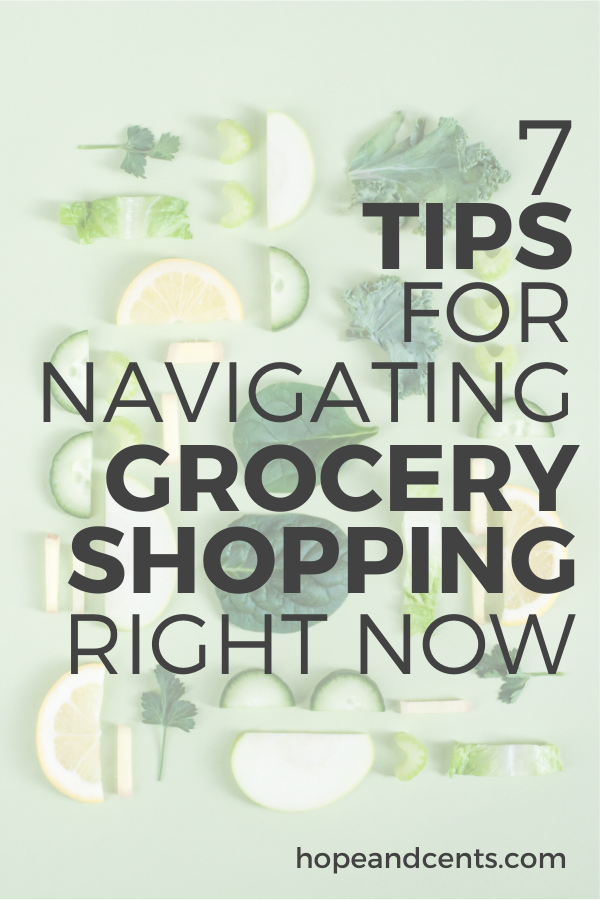Do You Have a Grocery Shopping Strategy Right Now?
7 tips for developing a grocery shopping strategy during the Coronavirus pandemic
What’s your grocery shopping strategy? Do you have one? Or do you just wing it?
Perhaps you think that the words “grocery-shopping” and “strategy” don’t belong in the same sentence. But they do. And now, more than ever is the time to develop and follow a plan for buying food and household items.
Prices are high. Quantities are limited. Some fresh items and other necessities are hard to find at all. A possible meat shortage is looming. Ordering online can mean placing your order weeks in advance and not getting what you ordered, in some cases. And of course, there’s the health risk of venturing out to stores. Oh, and toilet paper. How can I not mention the toilet paper? All this adds up to the fact that you need a plan.
These tips will help you navigate the changing world of food shopping and develop a grocery shopping strategy.
1. Increase your grocery budget
First things first. Expect to pay more on groceries right now — a lot more in some cases. I’m sure you’ve already discovered that prices have increased. Now, with possible meat shortages, we can anticipate additional increases and even more scarce quantities.
So have you adjusted for those increases in your grocery budget? If you’re still budgeting the same amount as you did pre-pandemic, then you’re setting yourself up for frustration and guilt when you overspend. Accounting for the increase gives you the freedom to absorb the higher costs as well as the ability to stock up on items you need.
If possible, I suggest raising your budget by 20% to 30%. If you don’t have the luxury of increasing your spending, seek alternative ways to off-set the higher prices. For example, local churches or organizations in your community may be running food pantries. (If you’re having trouble affording groceries right now, the “food” tab in this spreadsheet provides some resources.)
2. Decide how often you plan to shop
Do you want your groceries to last you one week? Two weeks? More? When you shop — whether it’s online or in-person — be clear about when your next shop will be. Ordering groceries online is not as easy as it used to be, and with recommendations to limit your in-person shopping, it’s necessary to maximize every single order or store visit.
3. Prioritize list-making
Speaking of maximizing your shopping, keep a running list of what you need so that when you’re ready to shop, you’ll know exactly what to buy. Placing a quick online order at the supermarket is a thing of the past (at least for now), and running out to pick up that one thing you forgot is not ideal. Consider having a master list that all family members can contribute to. (Or maybe not.) 😊
4. Re-learn where to find the best prices
If you’ve followed some of my previous grocery shopping tips, then you know learning the lowest prices of the items you buy is one of the best ways to keep your grocery spending down. Despite price increases, or perhaps because of them, that advice still applies but may look a little different.
Again, we’re dealing with higher prices across the board. We don’t know how long they will last, so I suggest relearning the best prices of your “high-impact” grocery items, meaning the things that are always on your grocery list. Be open to the possibility that the best price may not be at your go-to store. For example, eggs at my local supermarket are $2.99/dozen right now, but at Target, they’re less than half the price at $1.39.
Your lowest prices could be from Amazon or at Costco. This doesn’t mean to start shopping at 17 different places, just spend a little time exploring the price differences on the items you buy frequently, and start shopping strategically.
5. Plan ahead for online supermarket shopping
Online ordering requires its own strategy. You may need to order weeks in advance, depending on where you shop. You may need to time when you place your order. Consider building in back-up items into your shopping in case what you want is out, and the store doesn’t provide a substitute. Again, be open to shopping at places other than your go-to’s. For example, you may choose to order your pantry staples from one online retailer and save the fresh items for your online grocery store order.
6. Be strategic when shopping in stores
The Centers for Disease Control and Prevention (CDC) recommends ordering online or using curbside pick-up when possible, and going to stores only when necessary. But for some people, going to the stores may be unavoidable. If you go, be sure to follow the CDC’s instructions for staying safe. Consider shopping during off-peak times like early week-day mornings or in the evenings.
7. Meal-plan like a boss
Stretch your grocery budget by stretching your groceries. You are likely dealing with more mouths to feed during the day then your pre-pandemic existence. At the very least, your own routine is looking different. So, meal-planning is your best friend right now. Planning before you shop is ideal, but now that you don’t know what you’ll encounter at the stores or what will be delivered, you may need to meal-plan after you get your food. That works too. Either way, you’ll reduce waste, maximize your budget, and stay organized. Here’s a basic meal-plan template. (You won’t even have to give me your email address.😊)
Be flexible with your grocery shopping strategy
However you decide to approach grocery shopping right now, remaining flexible is a must. Your grocery shopping strategy for this month may need to change for next month. So be willing to assess and adjust as needed.
Do you have a grocery shopping strategy? What’s working for you? What isn’t working?



0 Comments